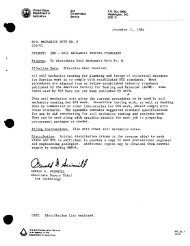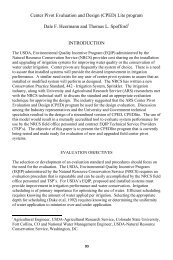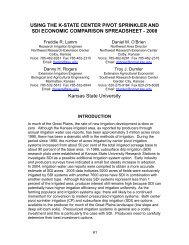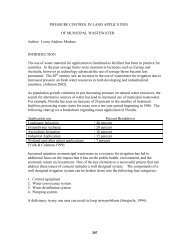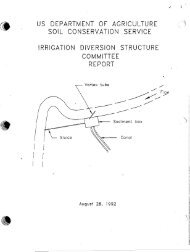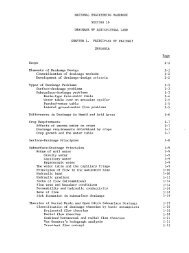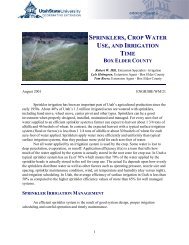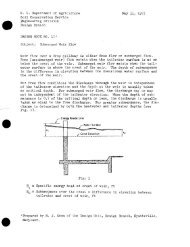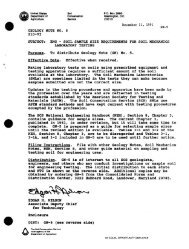Modernizing Canal Check Structures with BI-Fold Overshot Gates
Modernizing Canal Check Structures with BI-Fold Overshot Gates
Modernizing Canal Check Structures with BI-Fold Overshot Gates
You also want an ePaper? Increase the reach of your titles
YUMPU automatically turns print PDFs into web optimized ePapers that Google loves.
emaining stop-log bays, the two adjacent to the Langemann gate were fitted <strong>with</strong> manuallyoperated electric sluices gates. These gates are open during high canal flows and closed duringlow flows. The outer most stop-log bays are only half the depth of the canal and the stop-logsare permanently in place. The automation at this canal check is accomplished by the Langemanngate, similar to the previous pump fore-bay Langemann gate.The third gate was placed at the entrance of an 800 CFS siphon crossing the Colorado River.The purpose of this installation was to maintain automated flow control and flow measurementinto the siphon.Over 1600 CFS is diverted into the Highline <strong>Canal</strong> at high demand. A bifurcation five milesdownstream in the canal splits the flow approximately in half. Originally the bifurcation wascontrolled using two radial gates, <strong>with</strong> hand-crank gate hoists. One radial gate controls theHighline <strong>Canal</strong> and the other controls the siphon. The gate on the Highline <strong>Canal</strong> had beenrebuilt recently, and as part of the canal modernization, it was upgraded <strong>with</strong> an automatedelectric hoist. This radial gate controls the upstream water level in the bifurcation.The Langemann gate, in the entrance to the siphon, is used to control flow. The installation wassimilar to the previous Langemann gates, but flow conditions were different. The entrance watervelocity is over 6-feet/second and the water freefalls over the gate-leaf into the throat of thesiphon. Even though the bi-fold leaf balances the approach velocity head on the gate, thehydrostatic difference across the leaf causes the gate to want to float.To counteract this lift force, the bottom beam of the gate was securely anchored to the concretestem-wall and the upstream side plates were bolted to the concrete side walls. The greaterhydrostat force across the gate-leaf required high inrush current to the motor to start the gatemoving. Because of increased the inrush current through the motor, the DC motor solenoids were382



